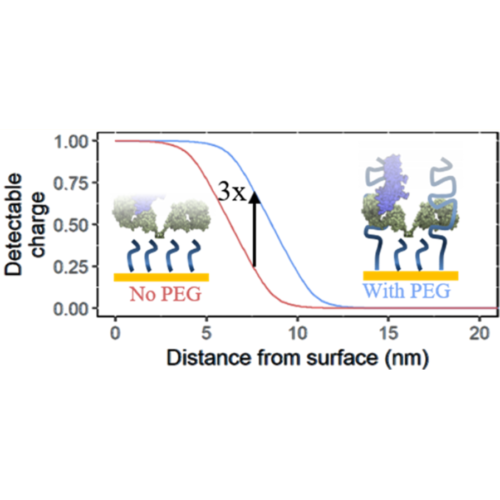Analytical Model To Describe the Effect of Polyethylene Glycol on Ionic Screening of Analyte Charges in Transistor-Based Immunosensing.
Recently, the co-immobilization of polyethylene glycol has improved sensor responses of transistor-based immunosensing by approximately three times. However, there is currently no analytical model available to explain this empirical effect. The key parameters thought to affect the potential are the receptor density, the capacitance, the analyte charge, and the dissociation constant. Based on our experimental data, only the analyte charge can account for the signal enhancement. To capture the effect of PEG on the analyte charge, we introduce a prefactor, the detectable charge qdet, which represents the portion of analyte charges effectively detected by the sensor. This parameter can quantitatively describe the PEG-induced signal enhancement and can be used to recommend the choice of PEG size for immuno-field-effect transistors. Additionally, we include the competition between electrolyte ions and the analyte for binding to the recognition molecule to more accurately describe the concentration-dependent sensor responses than the traditional Langmuir binding model does.

- ACS Sens. 2019 Apr 26;4(4):874-882
- 2019
- Applied Chemistry
- 30839200
- PubMed
Enabled by:
